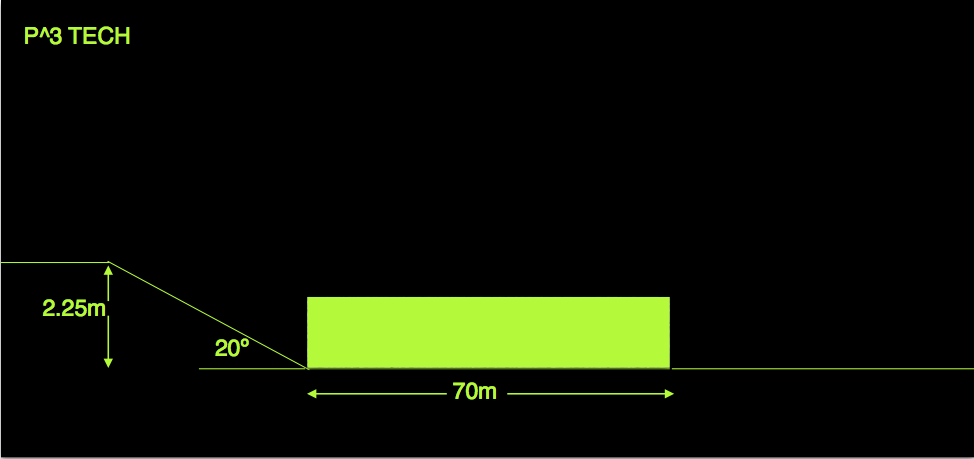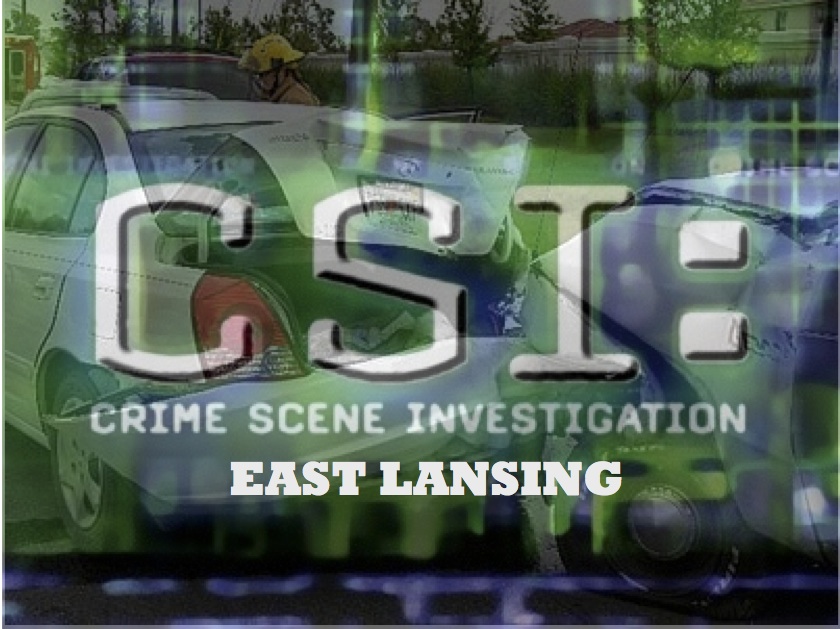Project 5: Part A: Escape from Korath Part 2
Project 5: Learning issues
- Constant acceleration and kinematic equations
- Frictional Force
- Rotated Frames (Forces on an inclined plane)
- Free body diagrams
Your team has navigated to the bottom of the cliff successfully but are confronted by an incline followed by a tunnel that then leads to the dimensional gate. Your amazing piece of tech (turning out to be very useful) indicates that the dimensional gate is at the end of the tunnel and must be entered at a speed of 20mph. It also indicates the angle and height of the incline and the length of the tunnel as displayed in the following screenshot from your tech. The tech also indicates that the base of the tunnel is made of a different surface than that of the incline. Your tech indicates that the incline is made of Leannium and you have conducted previous tests on this material that indicates that a sled can rest on an incline of the material without sliding as long as the angle of the incline is less than or equal to 14º. At the top of the incline are two sleds. You have one chance of escape, for all four of your group members to push the sled down the incline and get in, move through the tunnel and then the dimensional gate. Will you be successful?
Project 5: Part B: CSI East Lansing Part 1
You are a group of scientists who are a member of an elite crime scene investigation unit who focus on traffic accidents. You have been called to the scene of an accident between two cars. Your initial assessment allows you to come to the conclusion that one of the cars has obviously run into the back of the other. Your team finds brake marks on the road. After examining the scene of the accident you conclude that one of the cars, a Volkswagen New Beetle was parked with its handbrake on and only the driver in it before the accident, while the other car, an Audi tt had a single male occupant (33 years old) who crashed into the back of the Beetle. Both cars were empty except for their drivers. The point on the road where the impact took place is indicated and you notice brake marks leading up to the impact and brake marks after the impact. After the impact, the cars were stuck together. The accident took place in a 40 mph zone and the road was dry. It is your task to determine if the person driving the Audi was speeding. There is a technical expert at the scene of the accident who will make any measurements you ask for.
Project 5: Part C: CSI East Lansing Part 2
The Audi TT drivers lawyer feels as if they have come up with a foolproof scientific argument as to why their client was speeding. They indicate that the car was actually traveling up an incline of 8 degrees when it started breaking. You have been brought in as an expert witness to indicate whether this is true or not.
Project 5: Part D: CSI East Lansing Part 3
Dear Sir/Madam:
I am writing you in regards to a court case pertaining to the evidence collected in the aforementioned accident. Both the prosecution and defense attorneys have filed briefs containing certain claims about the “physics of the incident” that are being used to suggest whether the accused was driving illegally. The claims suggest either that the accused was (1) speeding prior to locking his brakes or (2) traveling at the appropriate speed.
I include each claim below and ask that you identify if the claim is warranted (a simple ‘Yes, this is true’ or ‘No, this is untrue’ is fine) and to provide reasoning for your evaluation. I have numbered the claims to make it simpler to reference them.
- The victim's injuries are a result of the incredible force exerted on him compared to the smaller force he exerted on the accused's car. The greater force that the accused's car exerted on the victim's suggests that the accused was traveling faster than reported.
- It was found that the accused was carrying several hundred pounds of gold bars in his Audi along with a set of golf clubs. This increased weight would depress the rear tires causing increased contact with the ground. Thus, he would stop more effectively and was thus traveling faster than reported.
- The Audi TT has aftermarket racing tires, which are wider than the standard tires. This increased width would increase the stopping efficiency and thus the accused was traveling faster than reported.
- The Audi TT has aftermarket racing tires, which have a larger coefficient of friction. This increased coefficient would increase the stopping efficiency and thus the accused was traveling faster than reported.
- A witness reported a puddle of water at the intersection of the accident. The lubrication of the water on the tire reduced stopping efficiency and thus the accused was traveling more slowly than reported.
I appreciate your quick response. Sincerely yours,
The Honorable Judge Judge Reinhold


